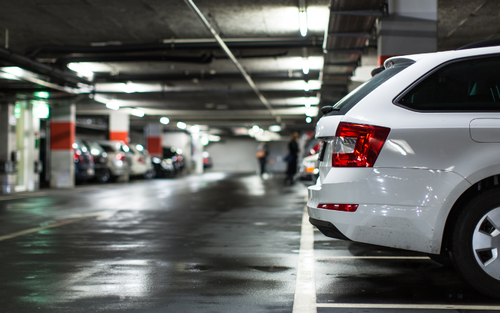Gas Detection in Parking Garages: Technologies and Strategies for Ensuring Safety and Compliance
Though parking garages are convenient and have become integral in most urban settings, these structures require important safety features to prevent the spread of hazardous gases, including carbon monoxide (CO) and nitrogen dioxide (NO2). Breathing in these gases often and for long periods can lead to serious illness and injury, including carbon monoxide poisoning, difficulty breathing, nausea, fatigue, fainting, and blurred vision.
Companies and owners of these structures should install a parking garage gas detection system to alert workers and managers of a gas leak. Underground parking garages usually have limited ventilation or a mechanical ventilation system, which can help or hurt the gas monitoring process, depending on the situation. Learn more about how these gases spread in underground and enclosed parking spaces and what you can do to protect your employees.
What is Parking Garage Gas Detection?
Parking garage gas detection systems monitor the concentration of hazardous gases, mainly CO and NO2, in enclosed parking areas with limited ventilation. They are typically a fixed gas monitor that stays in one spot permanently vs. a portable gas monitor that workers wear. They are designed for constant use and these units are wired to a power source. Parking garage gas detectors are found nationwide in many office and residential buildings, particularly in major cities.
Companies can monitor the amount of gas in the air by installing a series of fixed gas detectors that issue an audible or visual alarm when the gas concentration level surpasses the permissible exposure limit. Those inside the space can leave the garage quickly to avoid injuring themselves. Management should also receive an alert to coordinate with their staff and contact the authorities in an emergency using the industry standard communication protocols.
Why is Parking Garage Gas Detection Necessary?
Diesel and unleaded vehicles release CO and NO2 into the air when they combust fuel to generate power. CO and NO2 gases are emitted from the tailpipe as the engine runs. Without proper ventilation, these gases can linger in the garage. This can pose a safety risk to employees and visitors entering and exiting the garage. Most people only occupy garages for a short amount of time, but even brief exposure can lead to negative health outcomes. Breathing in these gases can also inhibit an individual’s ability to operate a motor vehicle and increase the risk of accidents.
Many facilities will artificially increase ventilation in parking spaces using a mechanical or automated system that will circulate the air to reduce the concentration of hazardous gases. However, operating these systems can be costly for the company and may not be cost-effective, considering that most people won't occupy the space for more than a few minutes.
In some cases, the ventilation system is motion activated, but this is not an effective solution. The system will turn on every time a car or person triggers the motion sensor, which can lead to unnecessary ventilation, especially if the person is leaving the space. The sensor also won’t detect idling vehicles, the main driver of hazardous gases.
How to Install a Parking Garage Gas Detection System
Companies should have a dedicated safety team in charge of monitoring the gas detection system. The system should feature an audible and visual alarm to alert everyone within the space.
Installing a wired monitoring system can be a challenge. Obstructions such as steel beams and concrete walls make it difficult to run wiring and cause delays that can impede emergency response times. It’s best to use a wireless parking garage gas detection network capable of communicating in real time with any smart device. The managers can review the readings on a control panel from a remote location.
The gas detection system should also be connected to the ventilation system so that ventilation increases in tandem with rising CO and NO2 concentrations. A variable CO-based demand ventilation control strategy can decrease energy costs in confined spaces and parking structures by only using ventilation when necessary.
Every space is different, but typically fixed gas detectors should be installed every 30 to 40 feet to ensure the entire area is monitored. All monitors should transmit their readings to a central user interface, enabling the manager to review all results from a single location. If one monitor detects a high gas concentration, all monitors in the garage should activate their alarms.
If you need more information about how to set up a gas detection program in your parking garage, contact the professionals at PK Safety.
Recent Posts
-
Customizing Gas Detectors: Tailoring Solutions to Fit Your Unique Requirements
In today’s diverse industrial landscape, a one-size-fits-all approach to safety simply doesn’t cu …Jul 3rd 2024 -
10 Ways to Prevent Wildfires
You can prevent wildfires by extinguishing flames before you leave the worksite. Avoid practicing …Jul 1st 2024 -
ANSI/ISEA 138 Safety Gloves: Ensuring Hand Protection
The human hand is an anatomical masterpiece and arguably the greatest tool attached to our bodies …Jun 25th 2024





